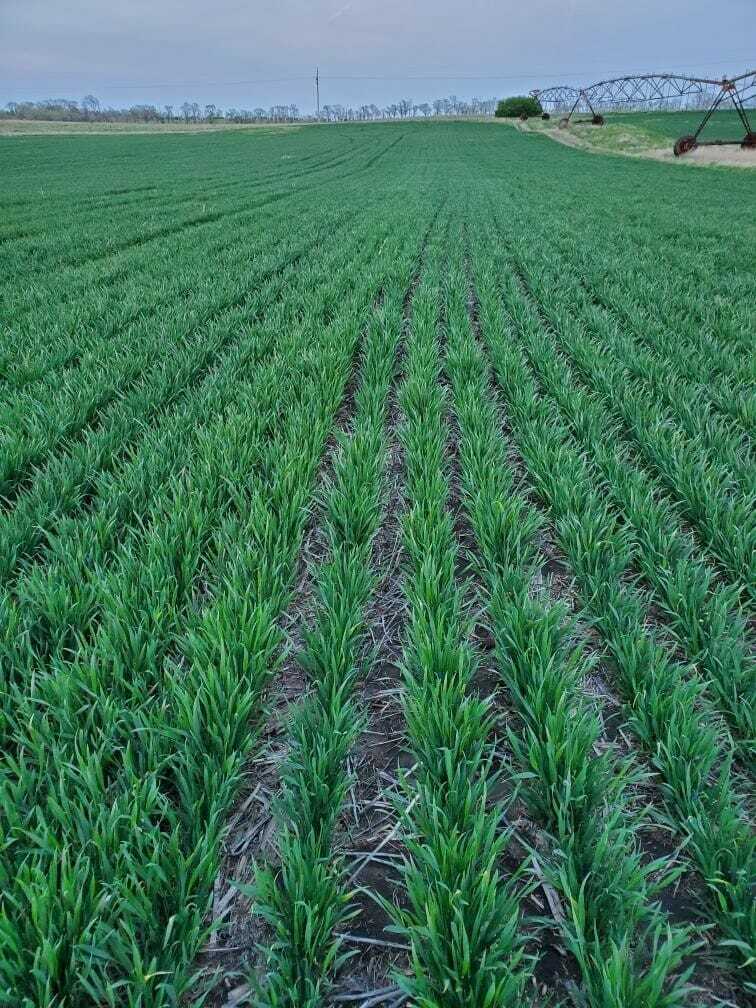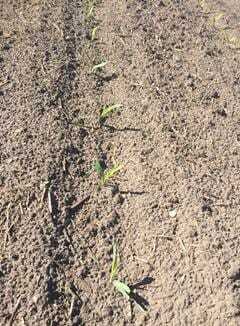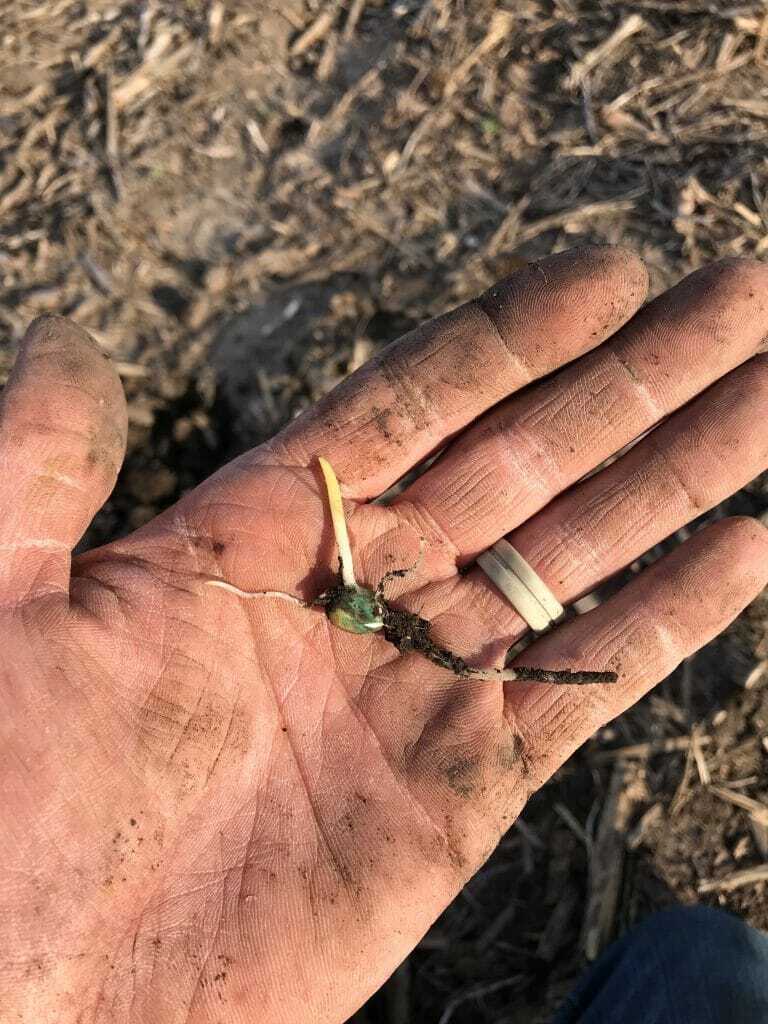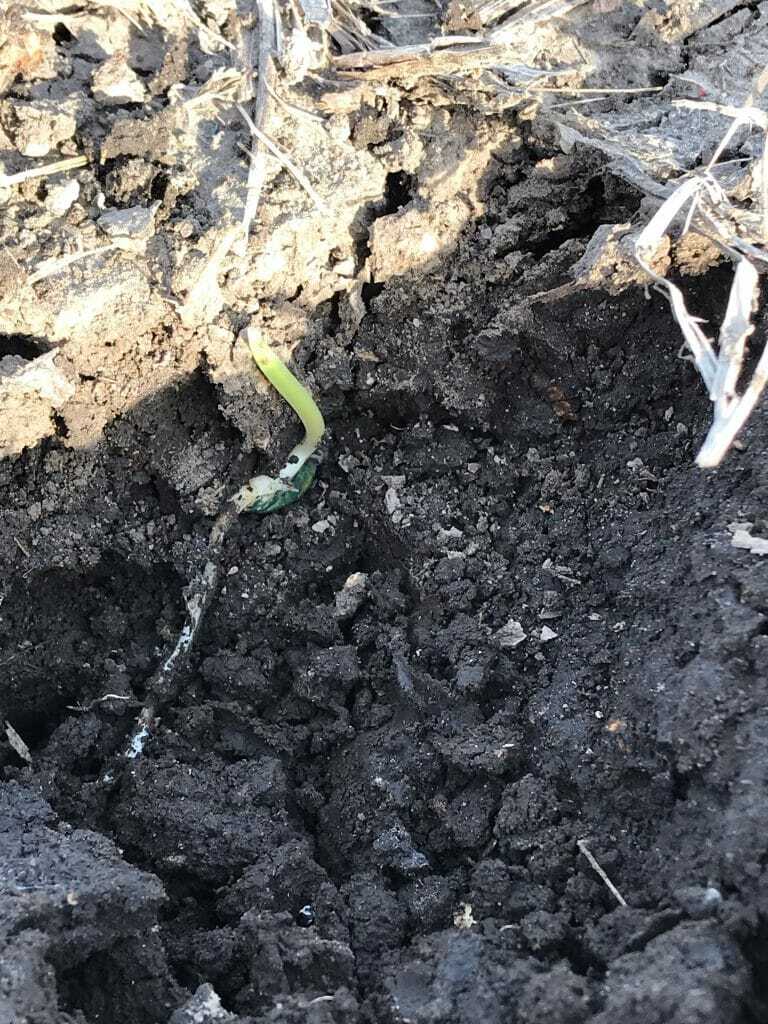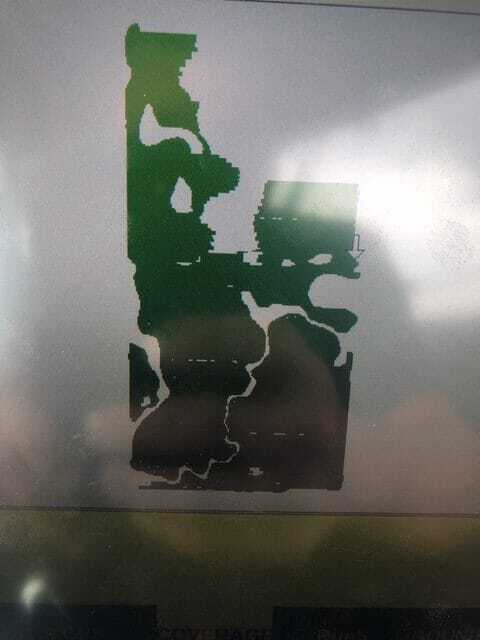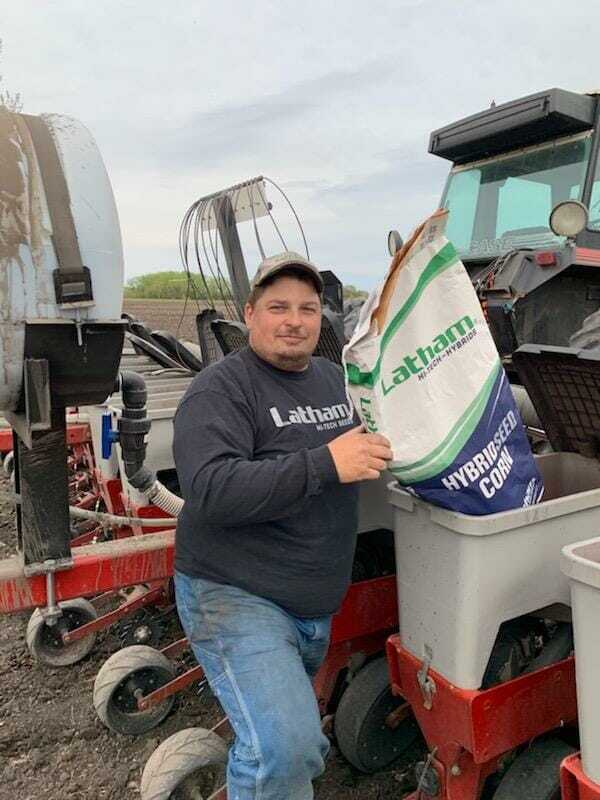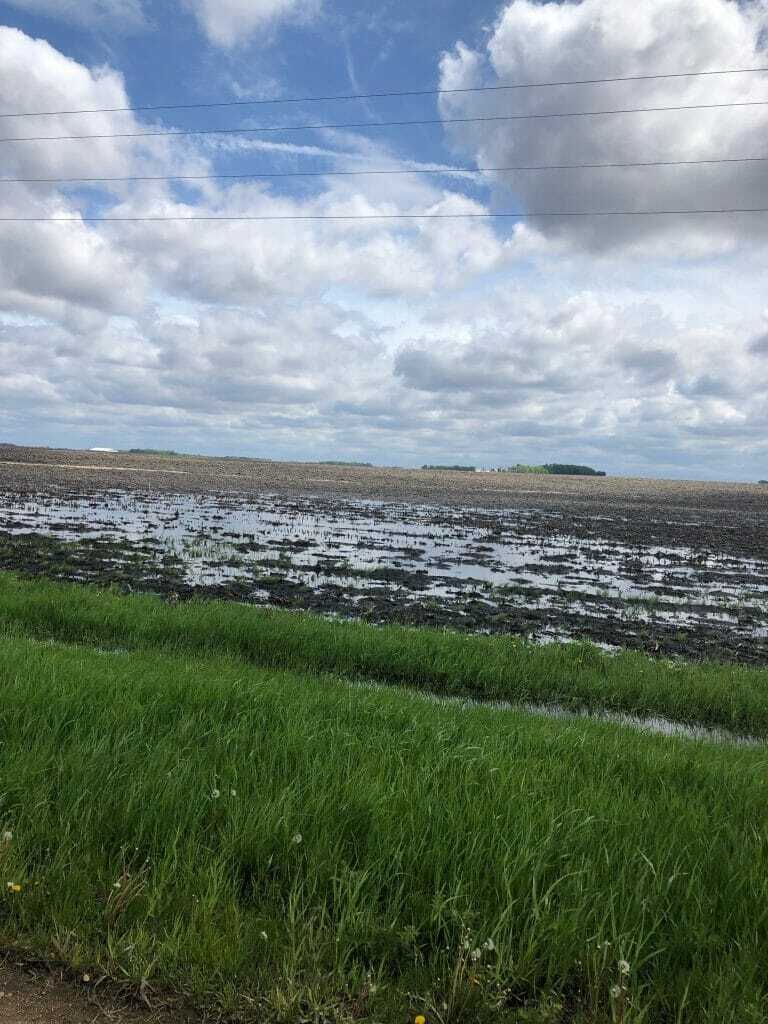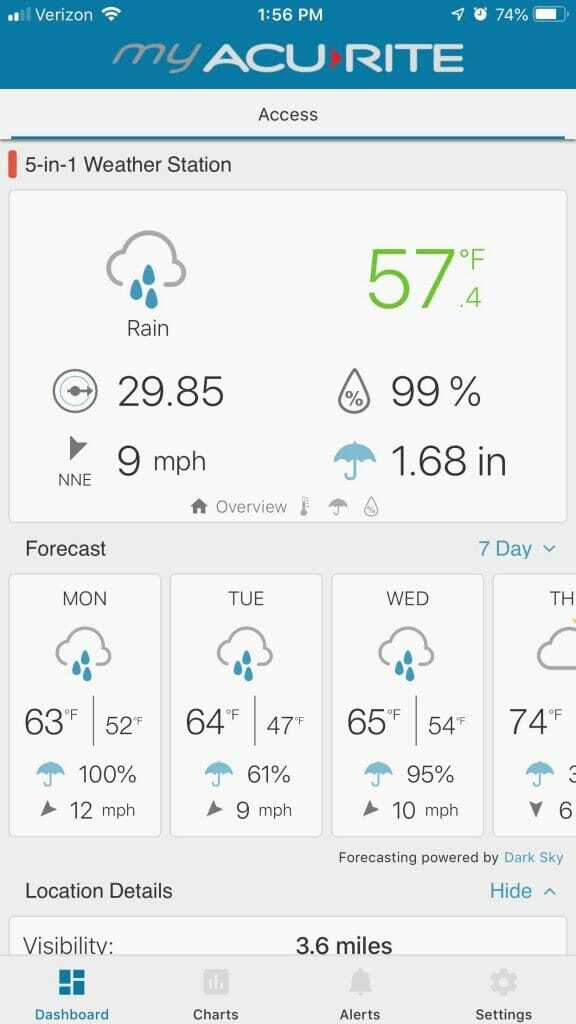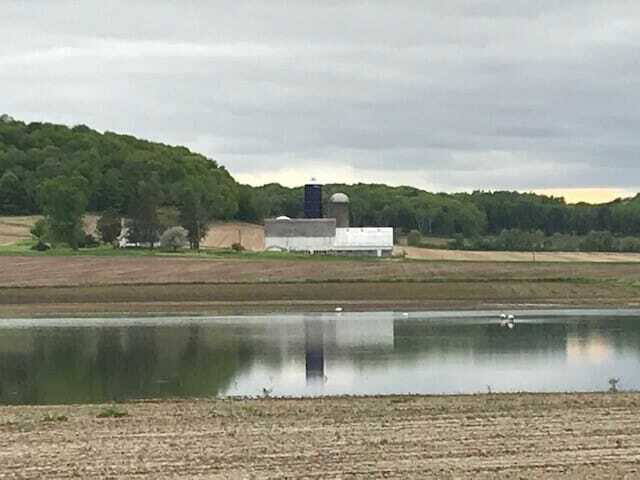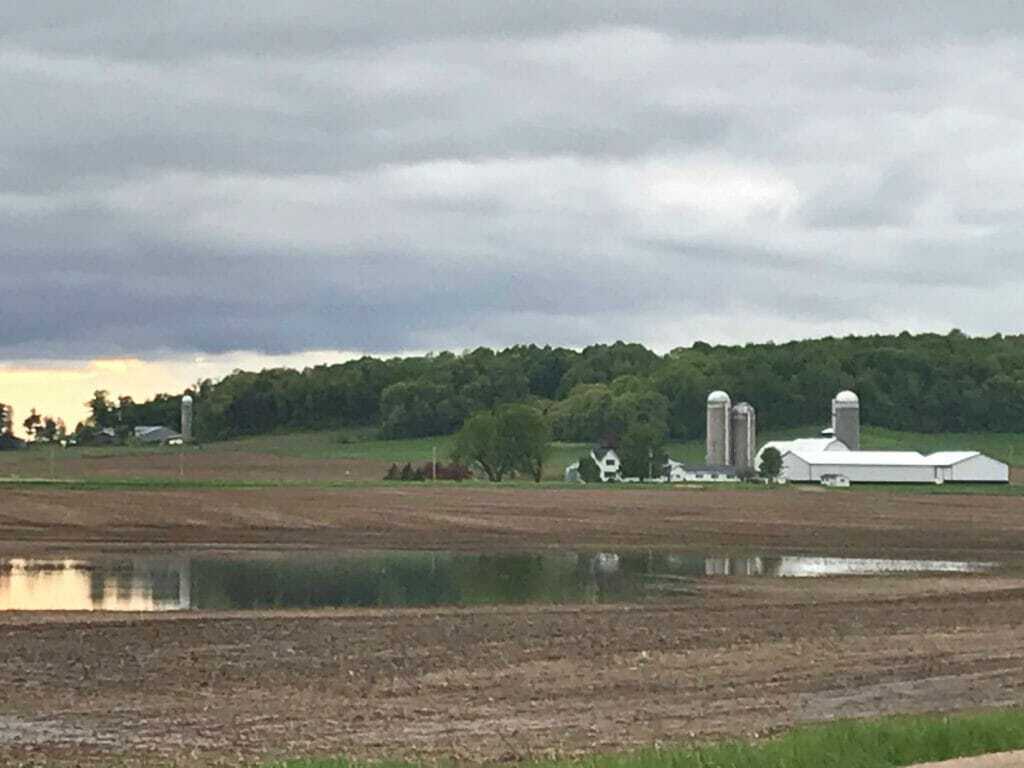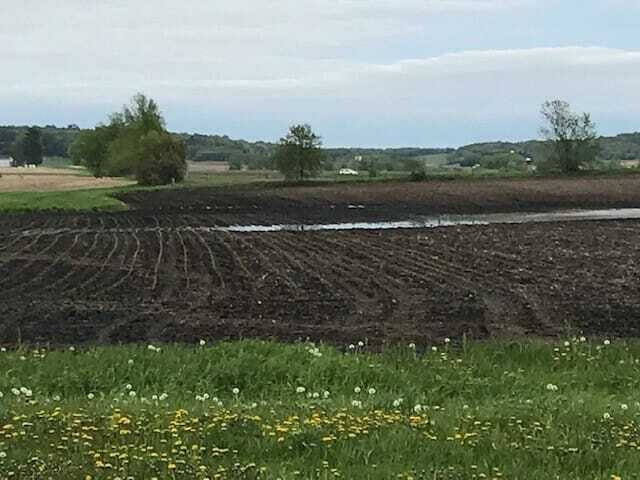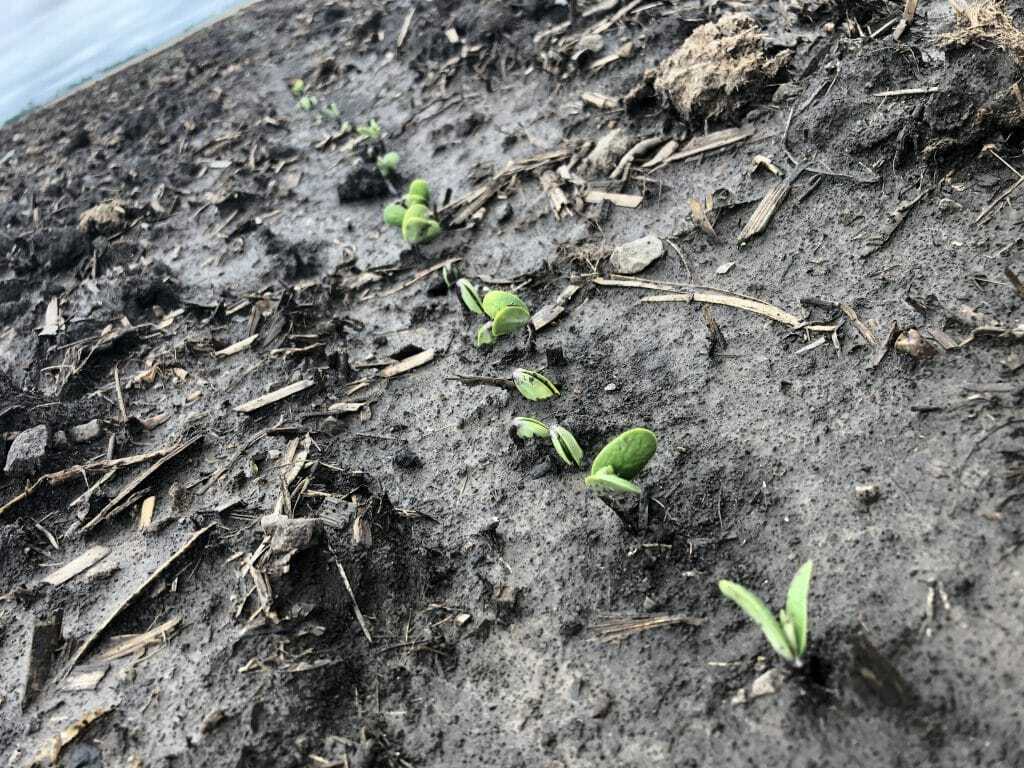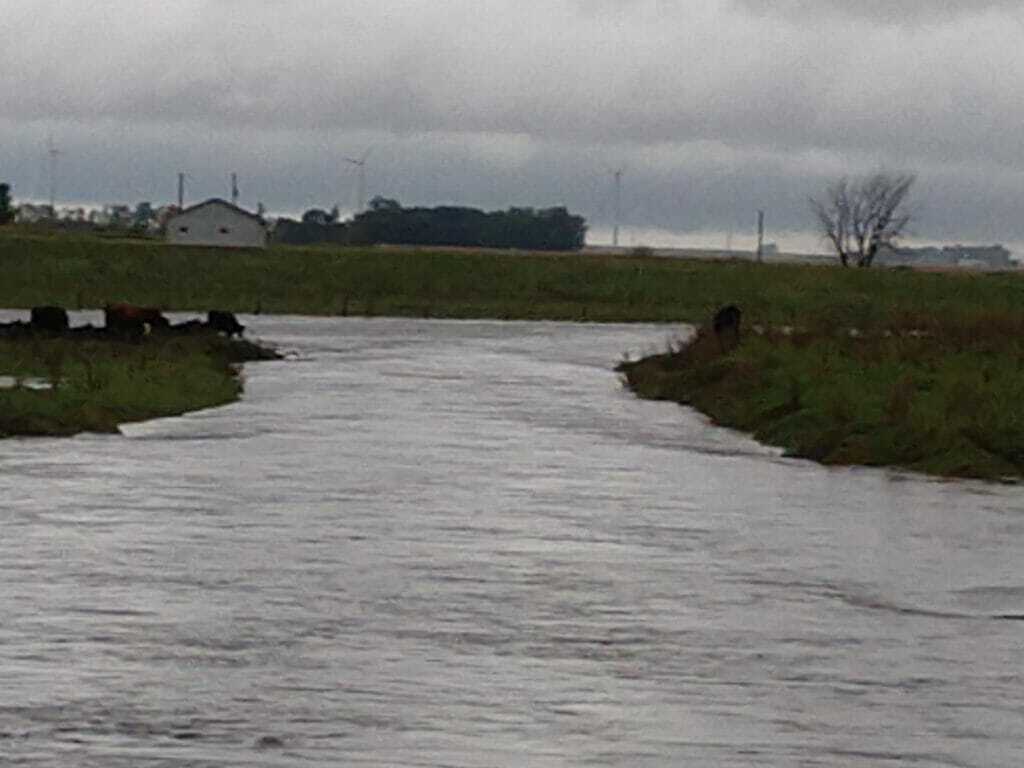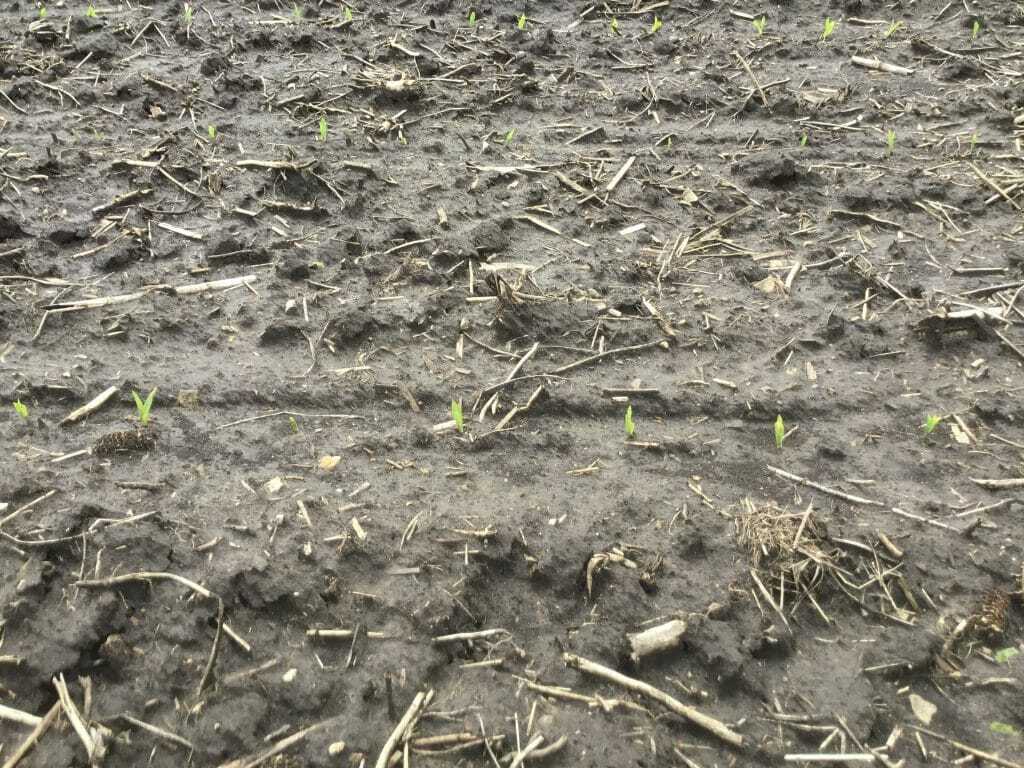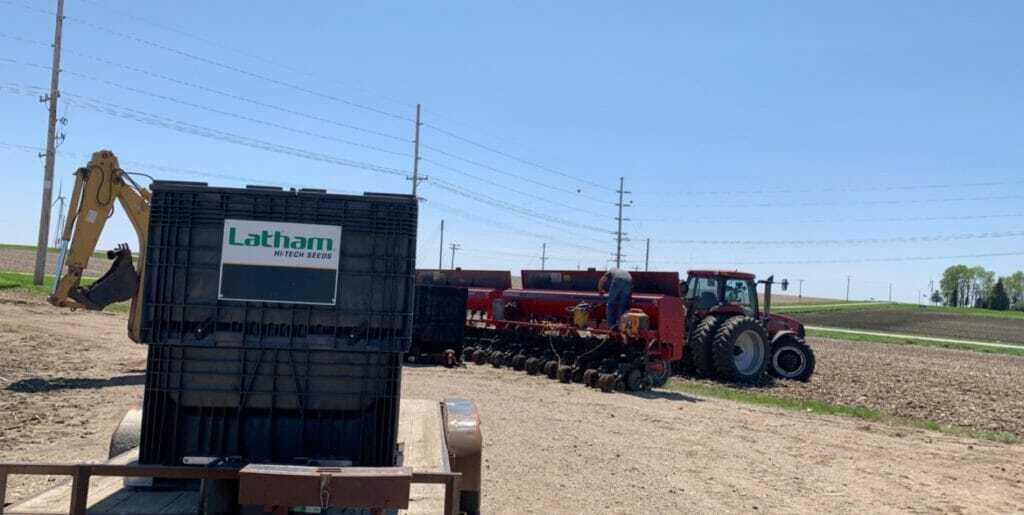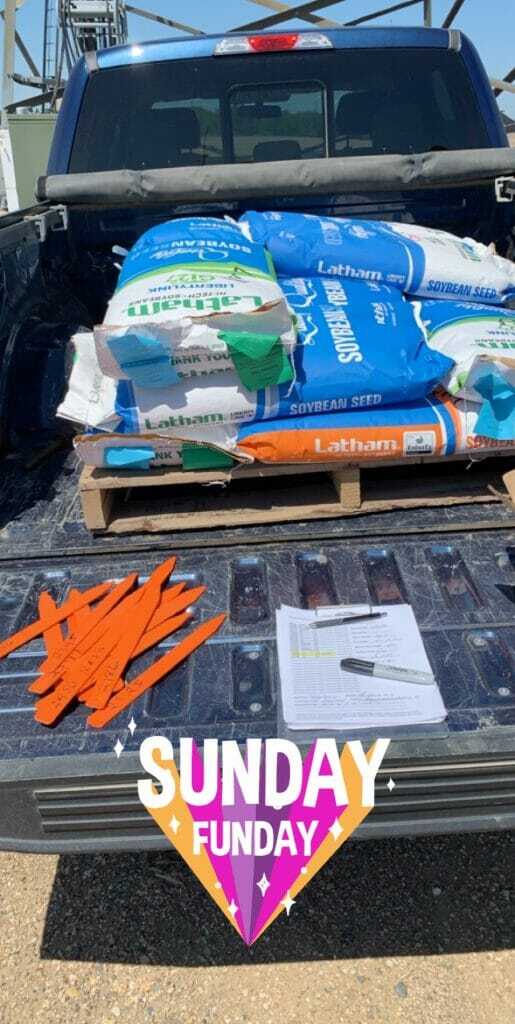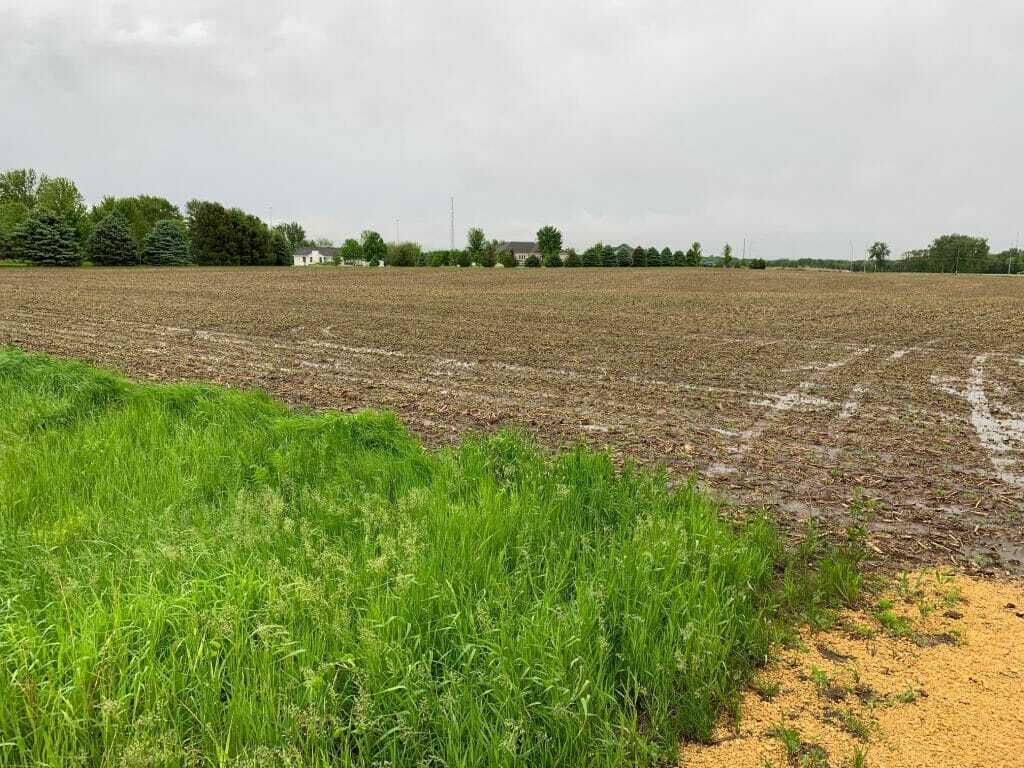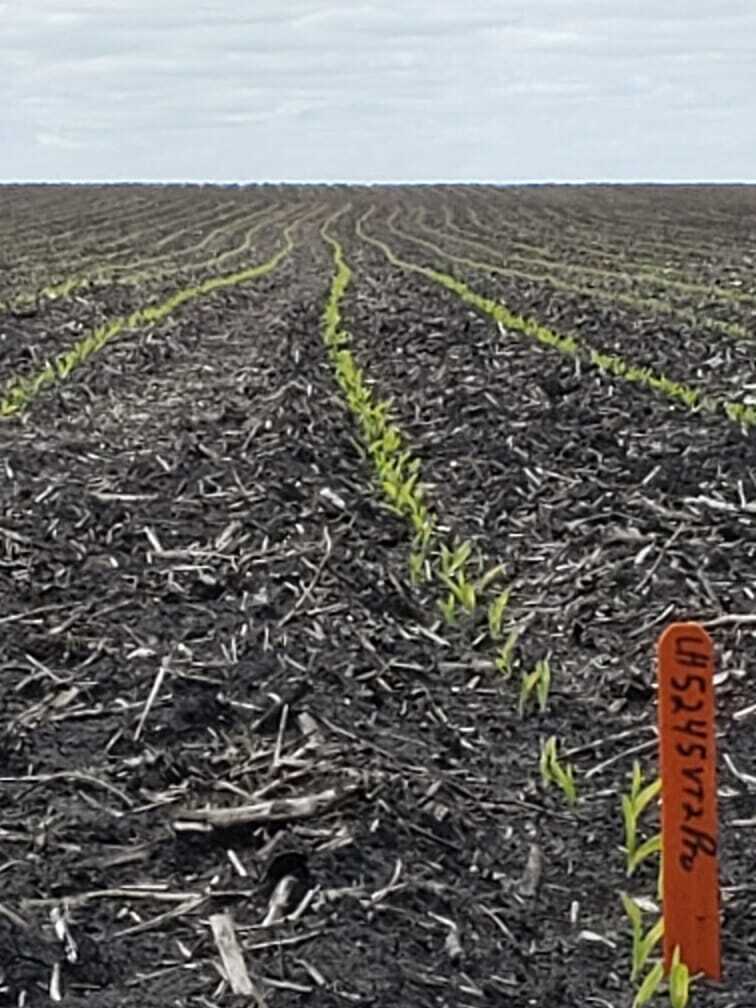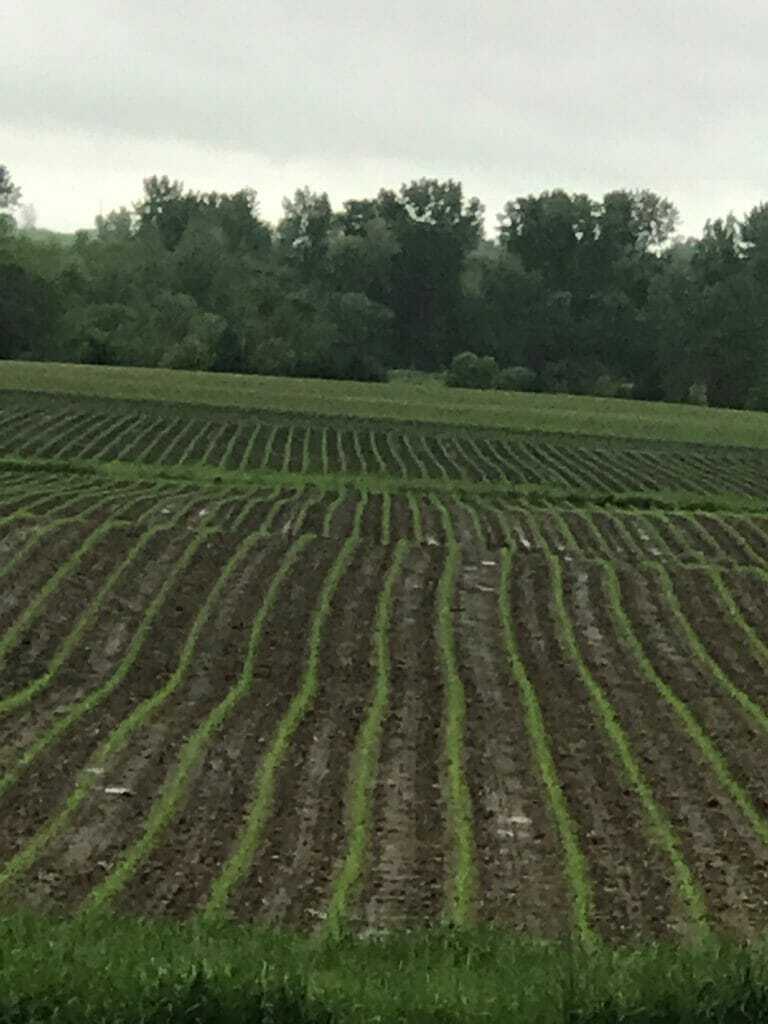May 29, 2019 Crop Reports
Eastern North Dakota
Brain McNamee
This week I wanted to post a picture of emerging corn, but truth be told, there isn’t much to show. Cool temps have delayed emergence by 2 to 3 weeks. Next week will likely be a different story as daytime temps are climbing into the mid-80s. Small grains thrive under cool, damp spring conditions, so at least this field of winter wheat is off to a good start.
Southeast North Dakota
Gary Geske
The crop is finally emerging after we were blessed with sunshine and warmer weather this week. We are all quite busy getting the crop planted where possible, but it’s also time to check emergence and seedling condition on previously planted acres. If a replant is needed, let your Latham® Dealer or RSM know as quickly as possible for a field inspection. They can help you decide which Latham product best fits your replant situation.
Northeast South Dakota
James Keltgen
A drier forecast is finally coming for Northeast South Dakota. Not much planting progress was made this past week as more rain fell. Corn acres will be lower as farmers are switching crops in an attempt to get fields planted. Some planted corn is emerged and some is nearing emergence.
Southeast South Dakota
Ramie Coughlin
Spring planting in Southeast South Dakota continues to be delayed by rain every few days, but growers are working hard to plant when and where they can. Many fields look like this one in the photo. However, growers are not ready or willing to throw in the towel on cornhusking yet. Delayed planting throughout most of the Midwest has many believing that corn prices will much more attractive this fall than in recent years. This past week we started switching full-season hybrids for shorter season hybrids. Latham® Dealers are working hard to get the right seed in place for when planting finally brakes loose. The 10-day weather forecast looks favorable for some planters to get in fields yet this year.
Northern Minnesota
Ken Highness
Nathan Wesolowski, a new Latham® dealer from the Tabor, Minnestoa, is planting 160 acres to Latham® Hi-Tech Hybrids LH 3427 GT/CB/LL.
Southern Minnesota
Justin Prokosch
Planting progress is pretty slow due to the ample amount of moisture we’ve received. Most growers are hoping for drier conditions, so they can soybeans in the ground.
Northern Wisconsin
Joe Salter
Time is running out to get this year’s crop planted, yet many growers remain optimistic about getting all their seed in the ground. Last week brought some good planting days, but rain has once again brought everything to a screeching halt. Corn is starting to emerge as shown in the pics. Many fields across Northern Wisconsin tell the same story… Growers are doing their best to get what they can planted, even if that means planting around water holes. Others are switching to early maturity options.
Many variables should be considered before switching to an early maturity hybrid:
- Choose a hybrid with excellent dry-down and high test weight.
- What is the potential use, dry grain or silage?
- Trade an A for an A! Don’t trade your high-yielding hybrid in for a leftover hybrid that’s early maturity. Make sure you can get superior alternatives.
Southern Wisconsin
Greg Mair
The acres that got planted are off to a good start plus the rally in the commodity market has farmers optimistic about the future of this year’s crop. Fields are looking green as corn and soybeans, which were planted the week of May 13, begin to emerge. LH 5249 SS RIB, planted May 14, was spiking through on Sunday in Janesville, Wisc. Latham® Liberty L 2249 L soybeans have gotten off to a fast start in Cuba City.
North Central Iowa
Cory Greiman
Too much rain this past week means very little field work got done in North Central Iowa and South Central Minnesota. Unfortunately, more rain is in the forecast for this week.
Northeast Iowa
Craig Haaland
Rain, rain, go away!
Anywhere from 3 to 4.5 inches of rain has fallen during the past week, so virtually nothing has gotten planted since last Tuesday. Everything is saturated, so it will be awhile before we can finish the 2019 planting season. Corn is starting to pop in the fields that were planted earlier. This field of Latham® LH 5400 is spiking through in Mitchell County, Iowa.
Northwest Iowa
Darin Chapman
Farmers in Northwest Iowa are having a difficult time keeping their planters going due to heavy rainfall. As much as I like to wait for ideal planting conditions, this year is an exception. We need to get seed in the ground, so we’re being strategic with the planter pass by keeping the dry top soil on top and not running our row cleaners too aggressively. By not running too aggressively and only moving debris with little to no top soil, we can keep the press wheels riding on the dry top soil to avoid plugging the planter with mud.
Eastern Iowa
Jerry Broders
Weather continues to be the limiting factor for spring planting 2019. Farmers in a small area of Jackson County were able to plant for a couple of days last week, but fields across most of Eastern Iowa weren’t fit.

Western Iowa
Larry Krapfl
This has been the season of extreme weather. Much of my area was adversely affected by flood waters this spring. Then on May 28 a devastating storm moved through the Adair-Stuart-Casey area. Torrential rains, hail so heavy it resembled a snowstorm and strong winds created hazardous conditions. Overturned semis temporarily shut down a portion of the interstate.
West North Central Iowa
Bart Peterson
LH 5245 VT2 PRO emerged like a rocket, and LH 5742 RR also had great emergence in this Latham® SuperStrip Plot north of Hardy, Iowa, that was planted May 6. Now all this plot needs is some sunshine and heat!
Central Iowa
Bryan Rohe
Getting your 2019 corn and soybeans crop in the ground will be extremely important to take advantage of rebounding markets. Central Iowa farmers are eager to finish planting, but Mother Nature isn’t cooperating. I’d say 90% of the corn acres and 65% of the soybean acres in my area are planted.
